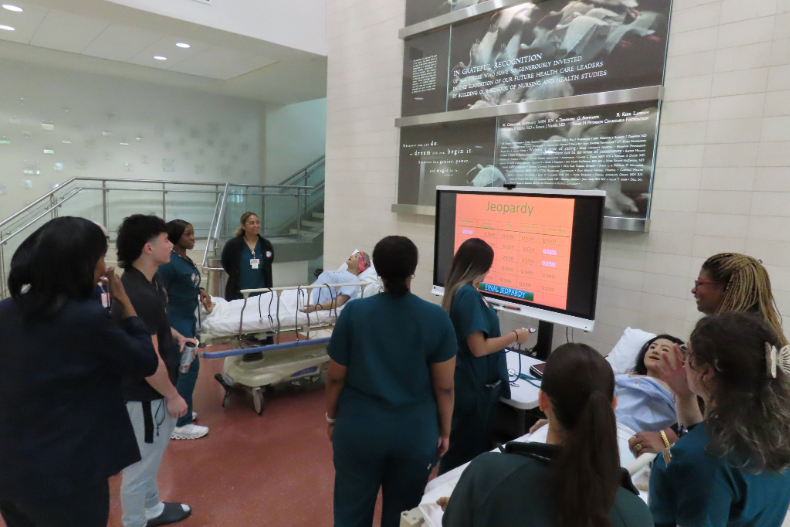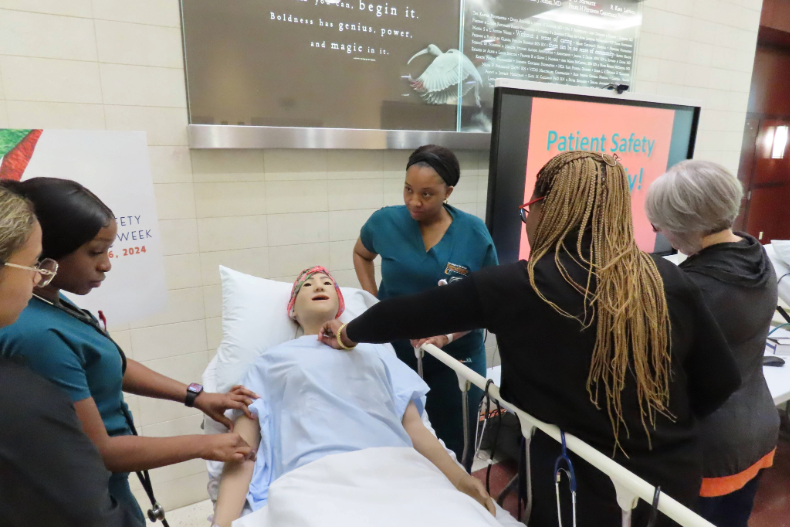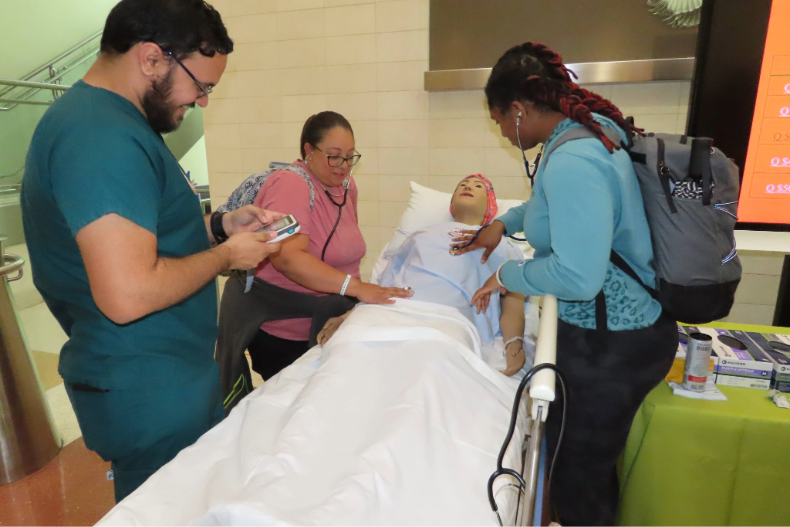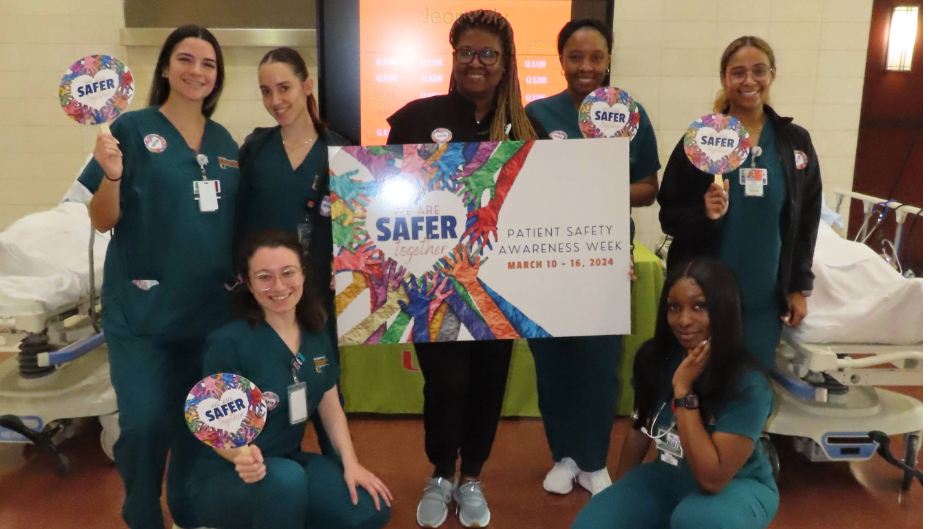S.H.A.R.E. creates a productive environment for practicing patient safety year-round, and SONHS faculty and clinical instructors ensure the extension of that education beyond the classroom.
This year, the S.H.A.R.E. team led a number of Patient Safety Awareness Week activities and events. They kicked off the week Monday, with a friendly Jeopardy-style game that took place in the SONHS lobby. Students arriving for the day had the opportunity to show off their nursing knowledge by answering questions related to patient safety as they passed through the lobby. Those who answered correctly received bragging rights, not to mention snacks and stickers.
Later in the week, S.H.A.R.E. staff ran two activities featuring mid-fidelity simulation mannequins. For one of the activities, students were asked to assess the mannequin’s vital signs and breathing. The other activity was an escape room-esque set-up requiring student participants to identify 15 safety hazards on the simulant in order to win.
Hands-on activities helped SONHS students put their lessons from the classroom into practice, giving them a taste of what it will be like during clinicals, where maintaining patient safety is paramount.
“Nurses at the bedside are often the first to recognize abnormal physical symptoms and other safety concerns,” explains S.H.A.R.E. Simulation Educator Tina Hayes of the important role nurses have in increasing patient safety measures. “Keeping patients safe is our first priority and we are the patients’ first line of defense and strongest advocate.”
Recognition of the importance of patient safety has increased greatly in the 21st century. The National Academy of Medicine published To Err is Human in 1999, a report that estimated up to 98,000 Americans died each year due to medical error. Since then, the call for greater patient safety measures has been met by medical professionals around the world.
One of School of Nursing and Health Studies’ (SONHS) answers to this call was growing a simulation program for patient safety, which culminated in 2017 with the opening of the Simulation Hospital Advancing Research and Education (S.H.A.R.E.) in 2017, a 41,000-square-foot fully simulated hospital environment used to train nursing students and conduct research. Simulation allows for nursing students to work on a variety of skills in a safe, constructive environment, so that once they step foot into a real hospital, the chances of them committing small, but potentially grave and life-threatening errors, is highly decreased.
With new technology increasingly being developed, it can be easy to forget that many students learn best hands-on. By adding creative educational activities during Patient Safety Awareness Week to S.H.A.R.E.’s curriculums inside the classroom, SONHS is creating a generation of nurses focused on and proficient at ensuring the safest possible environment for their patients.
“At S.H.A.R.E. we offer students a variety of activities such as these to build their patient safety awareness, preparing them to take charge in the clinical environment,” says Hayes.






